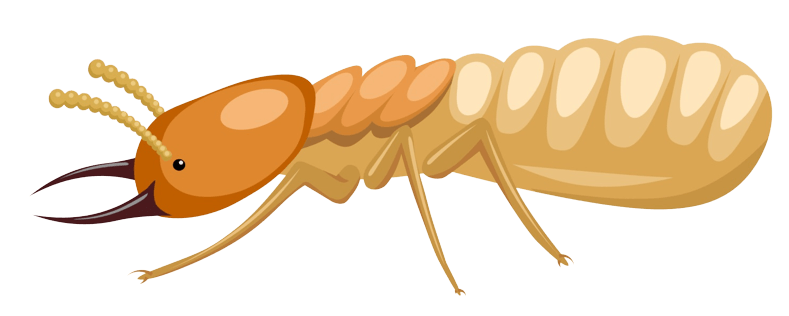Say goodbye to unwanted pests with our trusted, non-toxic methods, endorsed by countless Tweed Heads, Banora Point and NSW Norther Rivers residents
- Home
- Termites
What is the appearance of flying termites?
How can one eliminate flying termites?

Preserve Your Home with our Termite Protection Services!
Effective Solutions for Your Termite Issue

At TSD Pest Control, we understand that termites cause more damage to Australian homes than fires, storms, and earthquakes combined. Termite infestations are not just frustrating and costly; they can be devastating. These relentless pests silently consume buildings from the inside out, often leading to substantial damage when discovered. Termites, sometimes called white ants, rank among the most destructive problems in Australia. They wreak havoc on homes and structures throughout the Gold Coast & NSW Northern Rivers, resulting in millions of dollars in damage each year. That’s why termite protection is a paramount concern for every property owner.
According to CSIRO, one in three homes will experience termite issues during the economic lifespan of the structure. Unfortunately, termite presence often goes unnoticed until damage is accidentally uncovered. Most insurance companies do not cover this type of damage, so implementing preventative termite protection measures is imperative. If your property hasn’t undergone a termite check and protection within the past 12 months, don’t wait any longer. Contact TSD Pest Control today to schedule a comprehensive inspection and safeguard your investment.


Wondering if Termites Have Infested Your Property?
Termites are notorious for consuming timber from the inside, leaving the wood bubbled or wrinkled. They’ll sometimes bore holes through the wood and cover them with mud. In homes, termites are frequently found in flooring, skirting boards, and doorframes. Here are some common signs to watch for when conducting a termite inspection:
- Hollowed Wood: Wood that appears hollow with the outer shell still intact.
- Earthen Shelter Tubes: Mud packing or shelter tubes on brickwork in subfloor areas or around the home.
- Flight Tubes: Tubes formed during the release of alates (winged termites).
- Alate Swarms: Swarms of winged termites emerging from the colony.
- Presence of Termite Castes: Detection of termite castes in trees or workings.
- Flight Cuts in Trees: Signs of termites cutting into trees.
- Unusual Noises: Unexplained sounds that may indicate termite activity.
- Mounds or Nests: The presence of termite mounds or nests in trees.
If you notice any of these signs, addressing the issue promptly is essential. Contact TSD Pest Control for a thorough termite inspection and practical solutions.
How To prepare For a Termite Inspection
At TSD Pest Control, we recommend the following steps to ensure a comprehensive termite inspection by our inspector:
Clear Cupboards: Remove items stored in cupboards located directly under sinks in your kitchen, bathrooms, toilets, and utility room.
Move Objects: Shift objects within approximately a meter of the exterior of your house and garage.
Trim Vegetation: Trim all bushes and plants growing outside your property. Overgrown vegetation can conceal critical damage that the termite inspector needs to see.
Ensure Attic Access: Ensure your roof space or attic is accessible and not obstructed by storage.
Depending on the size of your house or commercial property, our inspections typically take 1-2 hours. Our skilled and experienced technician will thoroughly check your entire property, from the foundation to the roof. We primarily use no or low-odour materials in and around homes and businesses, allowing you to remain on the property during the inspection and treatment. However, please inform our technician if you prefer to leave or have chemical sensitivity concerns.
At TSD Pest Control, we are dedicated to providing a seamless and practical termite inspection experience. Contact us today to schedule your inspection.
Termite Prevention Tips
As a property owner, taking proactive steps to prevent termites is essential. Here are some valuable termite prevention tips to follow:
Timber Storage: Remove loose timbers stored in contact with the ground on the subfloor and around the exterior of your home.
Landscaping Materials: Consider removing or replacing landscaping timbers and timber retaining walls that are less susceptible to termite attacks.
Garden Bed Placement: Keep garden beds below the weep holes in external walls to prevent concealed termite entry.
Ventilation: Ensure that vents are unblocked to allow cross-flow ventilation under the home, as poor ventilation creates conditions conducive to termite infestations.
Moisture Control: Termites are attracted to moisture, so promptly fix any leaking water pipes, drains, showers, and sinks.
Water Tank Overflow: If you have a water tank, plumb the overflow to stormwater to prevent excessive moisture that promotes termite attacks.
Hot Water Service Overflow: Similarly, have the hot water service overflow plumbed to a drain or directed away from the home to avoid creating conditions attractive to termites.
Regular Inspections: Schedule regular termite inspections conducted by an experienced and accredited inspector. Inspections every 6-12 months are recommended. While inspections may not prevent termite attacks, they help limit the damage before it becomes extensive.
